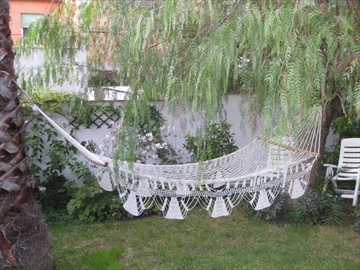Sometimes, beautiful places are overshadowed by the fame of larger and nearby cities. That’s nowhere more evident than in the little publicized towns rising on the hills of the province of Rome. They’re a collection of ancient landscape, lush vineyards and terraced trails. This is the Castelli Romani region, roughly 20 kilometres south of Rome, a cluster of a dozen or so towns with names that are rich in Italian history: Frascati, Marino, Nemi, and of course, Castel Gandolfo, with its Papal Palace that has been the summer home of Popes since the early 1600s.
They’re all just a comfortable ride by bus, train or car from Rome and once you’re there, small hotels and hilltop cafés, some looking centuries old, are open and waiting. That’s how it was the first time I went, researching a book back in the 1980s. Nonetheless on my recent visit, this time with my wife Barbara, hardly anything seemed changed especially the welcoming spirit. It seemed as warm and sincere as the first visit. The place we chose to focus on, has a name that, if you pronounce it as Italians do, will remind you of the lush sound of Italian opera: Monte Porzio Catone. It’s a hilltop town of about 7,000, its atmosphere and views familiar on this my third visit.
Since our decision to see the town again was a bit late, the local inns were filled but we found a comfortable cottage with fruit trees and an olive grove in a nearby village, Torre Jacova. The village is a pleasant place of one main street and its residents are mostly men and women working in Rome. The cottage owners, Liz and Tony, lived next door and were so generous Liz met us at a Rome subway station and took us over curving, climbing and scenic roads. The cottage has three rooms with a kitchen adequately furbished, so we had most but not all, our evening meals at a table in the garden beside the olive trees. Our choices were, as is our preference, pasta, some prepared at a village store, others by Barbara, with local ingredients, including cheeses and greens, prepared by her, if I may say, with considerable culinary imagination.
It’s only minutes by car, up the steep and curving hills, to Monte Porzio. Just entering the town is an experience that is permanently set in memory: It was siesta time and silent. We strolled in the peaceful tranquility, up and through a large archway, then over cobbled lanes and sidewalks, and ultimately to a wide outdoor balcony, where if you look to the distance you see multi-colored rural Italy.
The sun shone every day, the streets often echoing with the song of children on school outings. The scene on all sides was green and gold, red roofed houses below and silent roads curving into a distance and leaving me wondering where they led. Some of the ancient streets provoked memories of my first visit back in 1984, when, a few weeks afterward, I wrote an article on my visit for Reader’s Digest, mentioning a local trattoria, Enzo’s, where mama always presided in the kitchen out of which drifted wonderfully memorable aromas. The article was, in time, friends told me, pasted on the wall just inside Enzo’s doorway. Barbara, out of curiosity, went searching for Enzo’s. Sad to say, time had overtaken Enzo’s. It was no longer there.
Sometimes, in my experience, there are sites on my travels that may be rich in history and provoking in curiosity, but not easy to visit and thereby understand, at least better than you did. Monte Porzio has one of those sites: an abbey founded back in 1607. It’s one of those proverbial edifices to behold: massive, sprawling and very silent. No, it’s not a prison. It’s an ancient but active monastery, set against the sky and raising many questions worth exploring, especially in today’s secular society. It’s called the Hermitage Tuscalan Monastery. I was told many hundreds of monks are residents. But there’s one problem: say a man comes with his wife and would like to visit. If so, he’s welcome, but she’s not. So we stood not far from its entry, impressed by its meditative presence but left wondering what its dedicated men have to say about a monk’s life today, in a world which is more and more skeptical of organized religion, monasteries in particular. We left not critical of it but we did have questions we wish we could have asked, indeed perhaps should have asked but couldn’t.
In a few days, our Italian sojourn came to its close. But we knew, as in years gone by, it would not be our last sojourn even if only in imagination. After all, Italy, above all else, is a place of yearning, so that once it’s in your memory it lives in your life, year upon year beckoning you back, one last time, to a beauty that is an eternal gift to us all.
Ken Bagnell is a travel writer based in Toronto.

